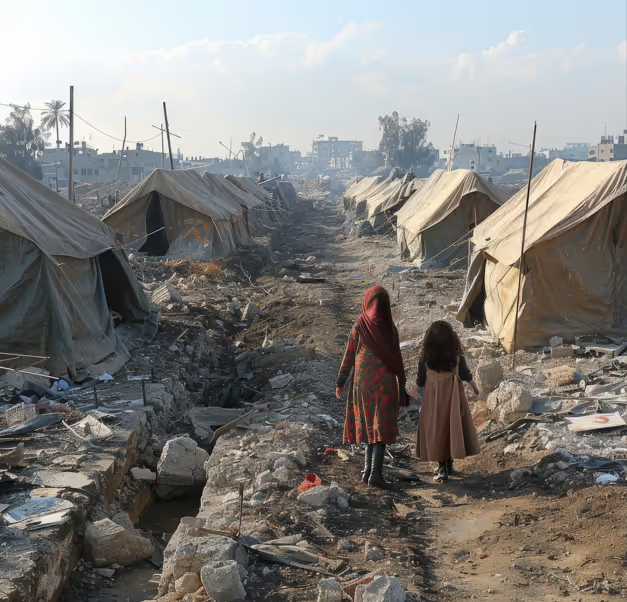Stay informed with our newsletter.
.webp)

.webp)

Summary: Gaza City, the enclave’s largest urban center, has descended into chaos as residents brace for an imminent Israeli assault. Streets are filled with panicked civilians seeking safety amid heavy bombardments and collapsing infrastructure. Humanitarian conditions continue to worsen, with shortages of food, water, and medical supplies. The looming military operation has heightened fears of mass displacement and casualties, intensifying international calls for restraint and urgent humanitarian access.

Two years ago, Gaza City was alive with bustling markets, packed classrooms, and beachside cafés. Today, the enclave’s largest city is a shattered landscape, reduced to rubble after months of Israeli bombardments and facing the threat of another major offensive.
The city, long central to Palestinian history, became Hamas’ de facto capital after the militant group seized control of Gaza in 2007. Under blockade by Israel and Egypt, life was difficult but structured through UN aid, Qatari support, and even an underground smuggling economy. Residents could still find pockets of normalcy coffee shops, yoga studios, and public parks even as unemployment soared and Hamas enforced strict policing.
That fragile order has collapsed. Since Hamas’ deadly attack on Israel nearly two years ago, Israeli strikes have devastated Gaza City. With Hamas’ security apparatus destroyed, armed gangs now roam the streets, families arm themselves for protection, and residents scavenge for scarce food and water. Sewage floods neighborhoods, while makeshift fires fill the air with black smoke.
“Sometimes you find [Hamas fighters] appearing suddenly, you don’t know where from,” said Abu Mohamed, a resident who withheld his full name out of fear. Once omnipresent, Hamas now operates largely from the shadows.
Despite heavy losses, the group continues to resurface. During a brief ceasefire earlier this year, uniformed fighters staged public appearances and organized ceremonies around hostage releases. Analysts say Hamas is recruiting new fighters and adapting to Israel’s campaign. “Hamas is not a static institution,” said Alex Plitsas of the Atlantic Council. “They’ve been able to replace fighters despite the destruction.”
Israel is preparing for what Prime Minister Benjamin Netanyahu has described as a decisive battle for Gaza City, one of Hamas’ last strongholds. Officials say the assault could begin in October, around the two-year anniversary of the war, after civilians are given time to evacuate. The operation will require tens of thousands of additional troops.
The fight is expected to be long and brutal. Hamas has expanded its underground “metro” tunnel system into a vast network of hubs and tactical routes designed for ambushes and surprise attacks. “They know we’re coming, so they prepare for that,” an Israeli military official said.
Humanitarian groups warn of dire consequences. Food and medical supplies are already scarce, hospitals have collapsed, and malnutrition and disease are spreading rapidly. Foreign governments have voiced concern about Israel’s conduct during the war, pointing to high civilian casualties, widespread destruction, and reports of human rights violations.
“The Israeli military could take Gaza City eventually,” Plitsas said. “But it will be extremely difficult, require a massive force, and come at a devastating cost.”
For questions or comments write to contactus@bostonbrandmedia.com
Source: CNN
